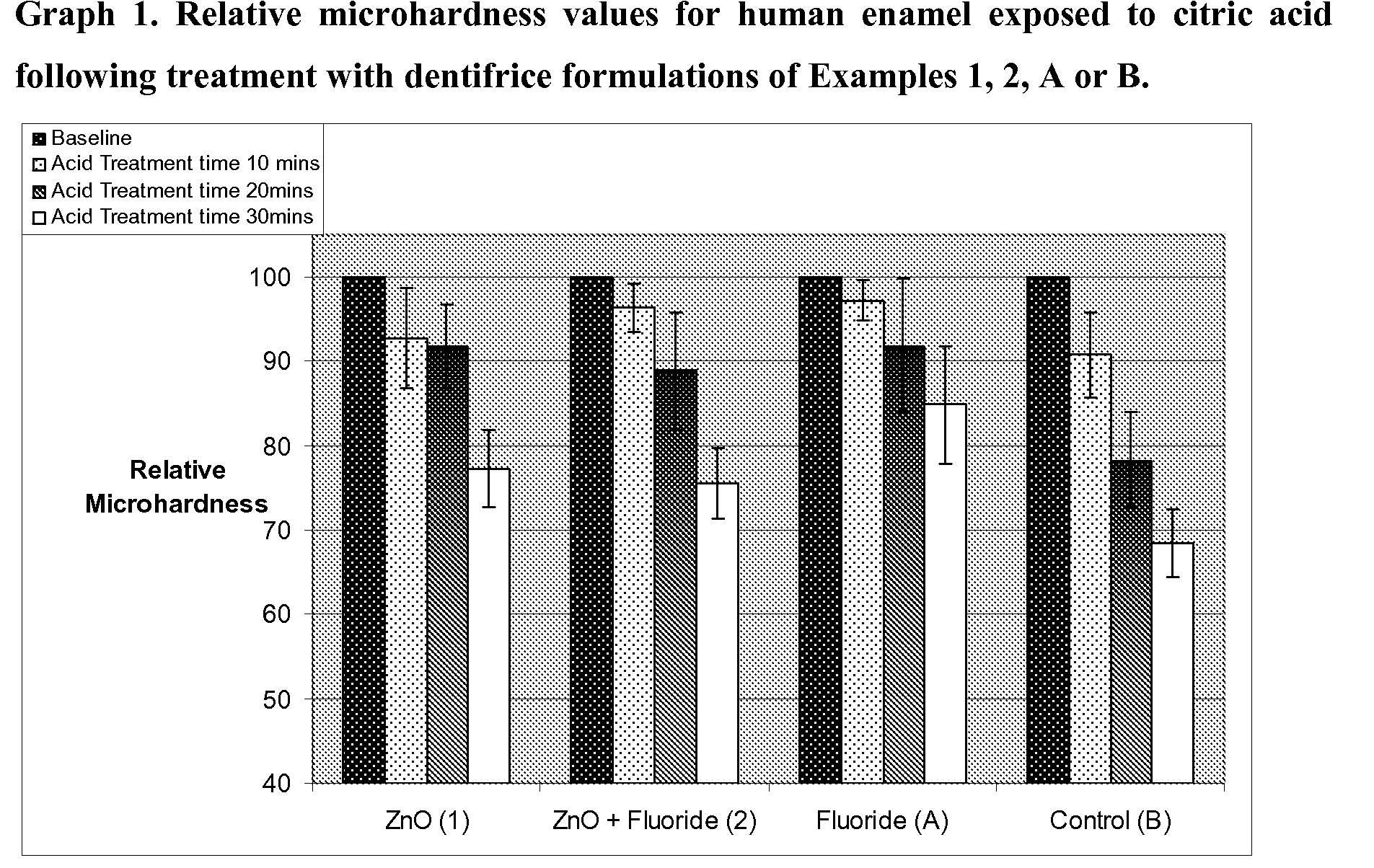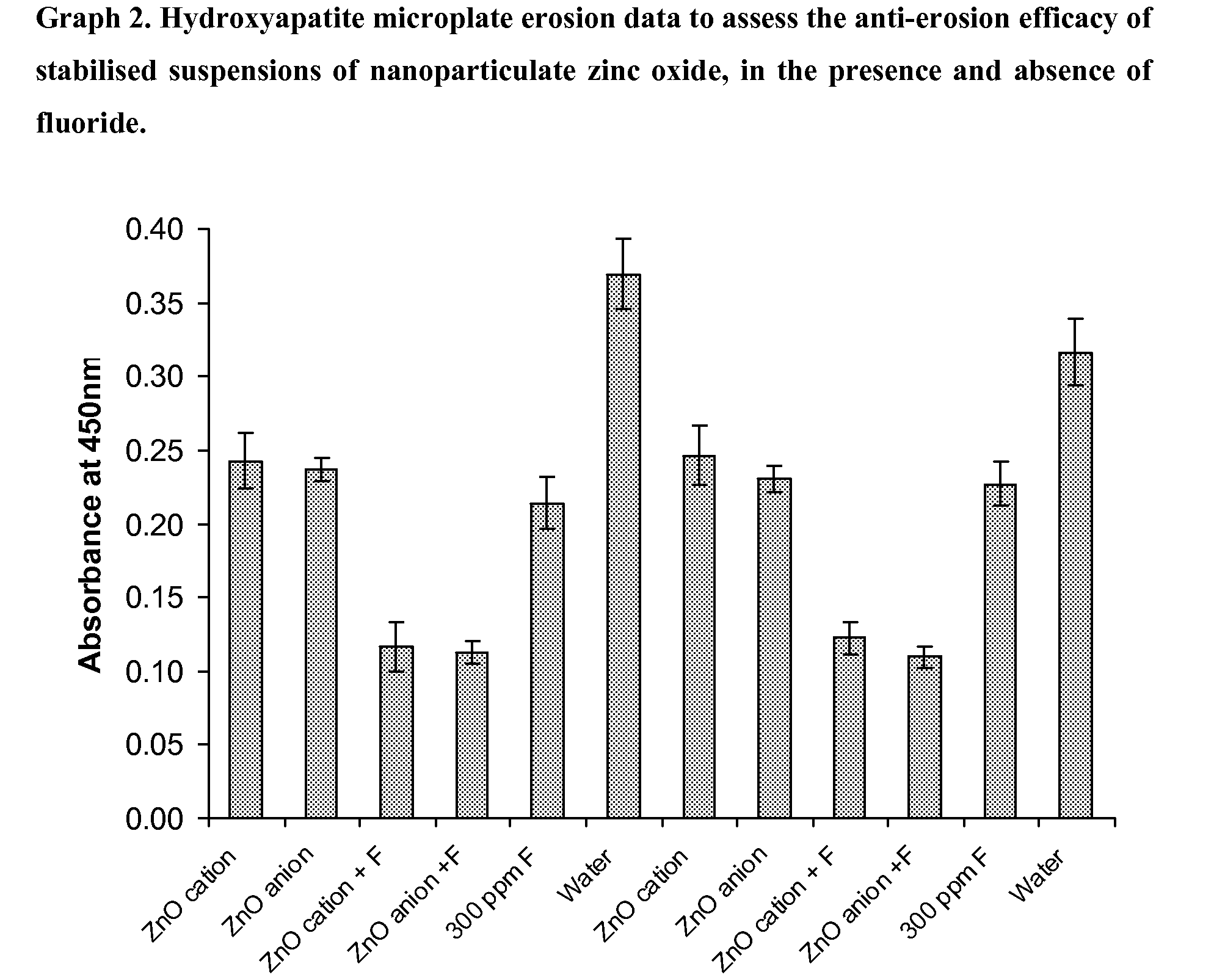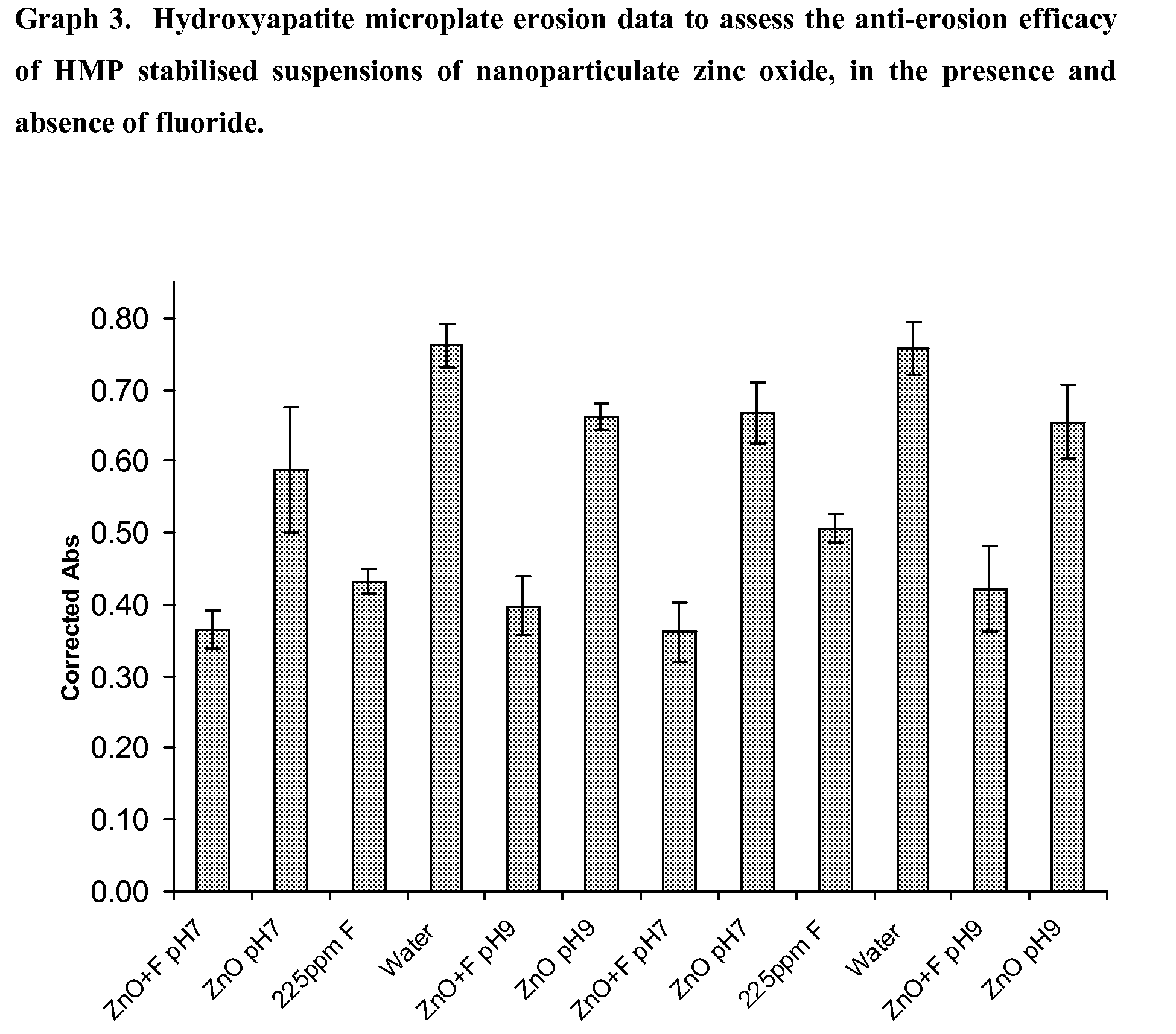Novel use
a technology of oral cavity and composition, applied in the field of oral cavity composition, can solve the problems of mutans /i>may become pathogenic, acidogenic bacteria, and progressive tissue loss and eventually cavity formation
- Summary
- Abstract
- Description
- Claims
- Application Information
AI Technical Summary
Problems solved by technology
Method used
Image
Examples
example 3
Enamel Surface Softening Microhardness Study for Assessing the Efficacy of Nanoparticulate Zinc Oxide as an Anti-Erosion Agent, in the Presence and Absence of Fluoride
[0068]The study performed involved incubation of human enamel in 1% citric acid (pH 3.8), following a 2 minute treatment with one of the four dentifrice formulations listed above, Example 1 (nano ZnO), Example 2 (nano ZnO+Fluoride), Comparative Example A (Positive Control containing Fluoride) and Comparative Example B (Negative Control excluding nano ZnO and Fluoride). Specimens were washed with water in between treatment and erosion procedures. Acid exposure times investigated were 10, 20 and 30 minutes, and microhardness measurements were made at each time point, after washing the specimens thoroughly with distilled water. Six indents were obtained for each enamel specimen at all time points, including at baseline. Each treatment was performed on six individual specimens (n=6).
[0069]The results of the softening study...
example 4
Hydroxyapatite Microplate Method for Comparing the Effect of Stabilised Suspensions of Nanoparticulate Zinc Oxide, Nanoshield ZN-3008C and Nanoshield ZN-3014A, as Anti-Erosion Agents, in the Presence and Absence of Fluoride
[0072]The wells of 96-well 200 μl microplates were filled with a concentrated suspension of high resolution hydroxyapatite (HA) powder (20 g HA in 200 ml acetone). The plates were allowed to dry under agitation (50 rpm on an orbital shaker) and then washed thoroughly with deionised water to remove any loose HA. For erosion experiments, the wells of the HA coated microplates were filled with deionised water and left to hydrate for 60 mins. The water was then removed and each of the 8 wells of one lane of the microplate filled with 200 μl of one of the agents to be tested. Each plate contained 12 lanes, so 6 agents could be tested in duplicate (at n=8) in each microplate. The actives were left in the wells for 30 mins under agitation, after which time the plates wer...
example 5
Hydroxyapatite Microplate Method for Assessing the Efficacy of HMP Stabilised Suspensions of Nanoparticulate Zinc Oxide as an Anti-Erosion Agent, in the Presence and Absence of Fluoride
[0075]An additional experiment was performed as described in Example 4, where the stabilising agent for the nanoparticulate zinc oxide (0.5 wt % suspension in water) was sodium hexametaphosphate (HMP) present in an amount of 2 wt % with respect to the zinc oxide (ie present in an amount of 0.01 wt %). Graph 3 displays the data obtained. The nanoparticulate zinc oxide was tested in the presence and absence of fluoride again, and at two different pH values (pH 7 and pH 9). The data show that while the nanoparticulate zinc oxide alone at pH 7 or 9 is statistically superior to water at preventing demineralisation of hydroxyapatite (and statistically inferior to 225 ppm fluoride alone), the combinations of the zinc oxide and 225 ppm fluoride are statistically superior to 225 ppm fluoride alone in this rega...
PUM
 Login to View More
Login to View More Abstract
Description
Claims
Application Information
 Login to View More
Login to View More - R&D
- Intellectual Property
- Life Sciences
- Materials
- Tech Scout
- Unparalleled Data Quality
- Higher Quality Content
- 60% Fewer Hallucinations
Browse by: Latest US Patents, China's latest patents, Technical Efficacy Thesaurus, Application Domain, Technology Topic, Popular Technical Reports.
© 2025 PatSnap. All rights reserved.Legal|Privacy policy|Modern Slavery Act Transparency Statement|Sitemap|About US| Contact US: help@patsnap.com



